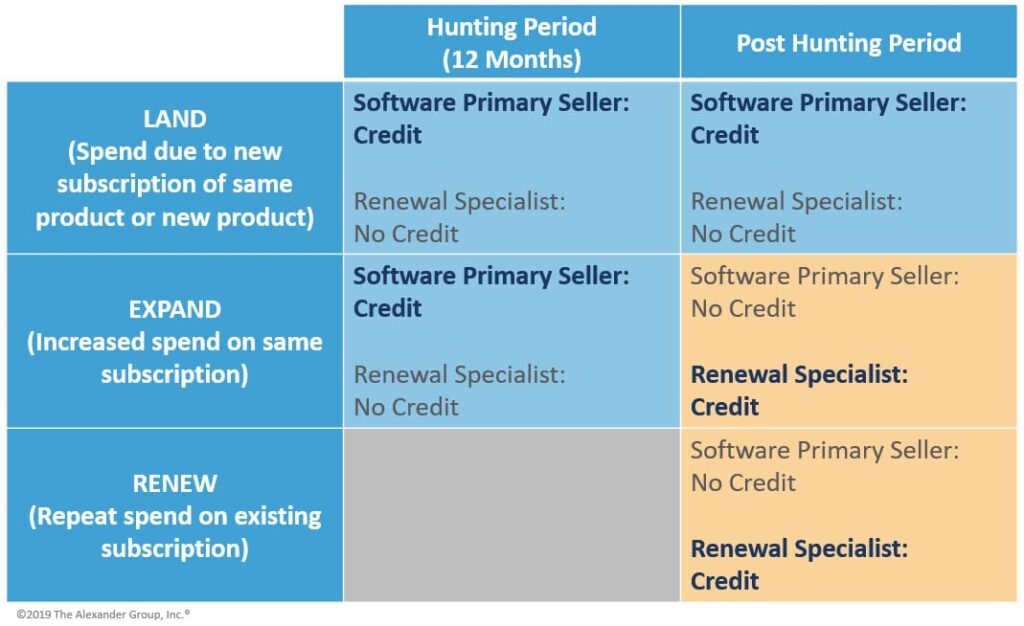Coverage and Crediting To Drive SaaS Growth

Life sciences companies are expanding beyond instruments and consumables to offer subscription software (SaaS). However, they face two significant challenges as they finalize coverage plans for their next fiscal year: choosing specialized roles to drive growth and crediting sellers for a sale. A successful coverage and crediting model addresses both challenges. First, break down the sale into land, expand, and renew motions; then determine the coverage and crediting rules for each motion. This ensures clear accountability and handoff across roles.
Land
In a land and expand model—typical at SaaS companies—the initial booking may be small with significant opportunity for expansion. Life sciences companies are realizing they need specialized selling roles to drive SaaS sales, which a traditional instrument-focused account manager may ignore. Such companies are starting to deploy software primary sellers who are able to carry the complete suite of SaaS software solutions. These sellers are responsible for driving all land opportunities. Land includes sales of new products to an existing set of users, new or existing products to different groups of users, or brand new logos.
Expand
To ensure expansion, companies can credit software primary sellers for all increase in existing licenses for the first 12 months of a sale. This also incents sellers to drive successful adoption, a key factor in increasing customer satisfaction and eventual successful renewal.
Once past 12 months of first sale, companies are now deploying and crediting inside renewal specialists. Typically, the bulk of the expansion that requires a sales representative is over. This frees the primary seller to focus on landing new subscriptions. Additionally, using renewal specialists reduces selling cost, as renewal sellers are typically a lower cost resource.
Renew
Finally, companies are introducing cross-product renewal teams for subscriptions that are either auto-renewing or not competitive. This unburdens the primary seller from the administrative task of managing renewals. And, companies can reduce selling costs by placing renewal teams in centralized, lower cost areas. By managing a portfolio of products that come up for renewal throughout the year, renewal specialists experience a more balanced workload. These factors increase efficiency in the renewal process.

Key Takeaways
Successful life sciences companies:
- Deploy specialist sellers to drive SaaS software sales
- Use software primary sellers to drive new sales and initial expansion
- Leverage renewal specialists to drive renewals and later expansion
- Establish well-defined crediting and clear rules of engagement across roles, which increases sales efficiency in this model
As you near the end of year planning, how is your coverage evolving? Reach out to AGI to discuss roles and crediting that can successfully drive SaaS software subscriptions.
__________________
RELATED RESOURCES
Life Sciences Trends: The Jobs and Deployment (R)evolution
Life Sciences: Uniting Marketing and Sales Through Digital Transformation